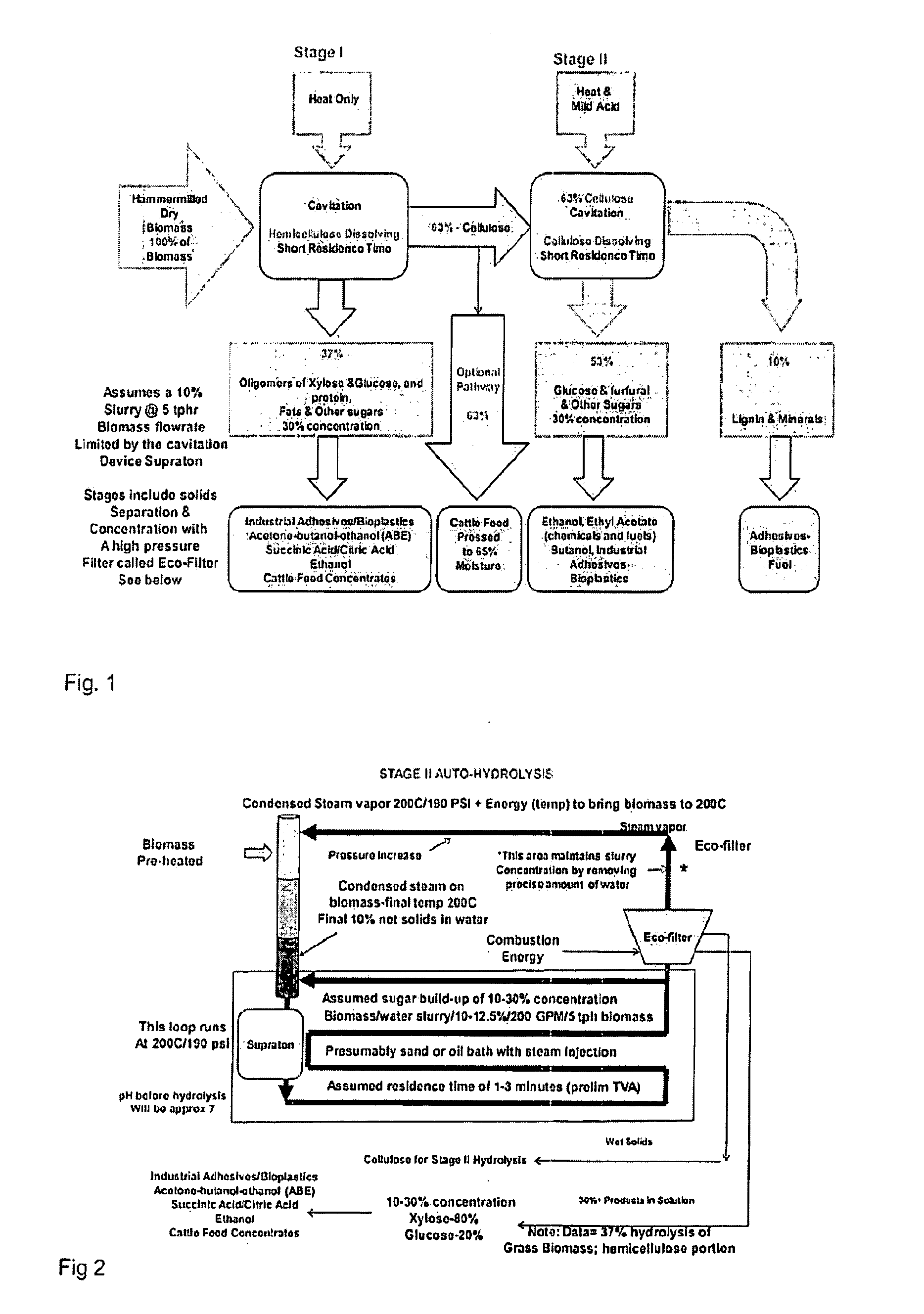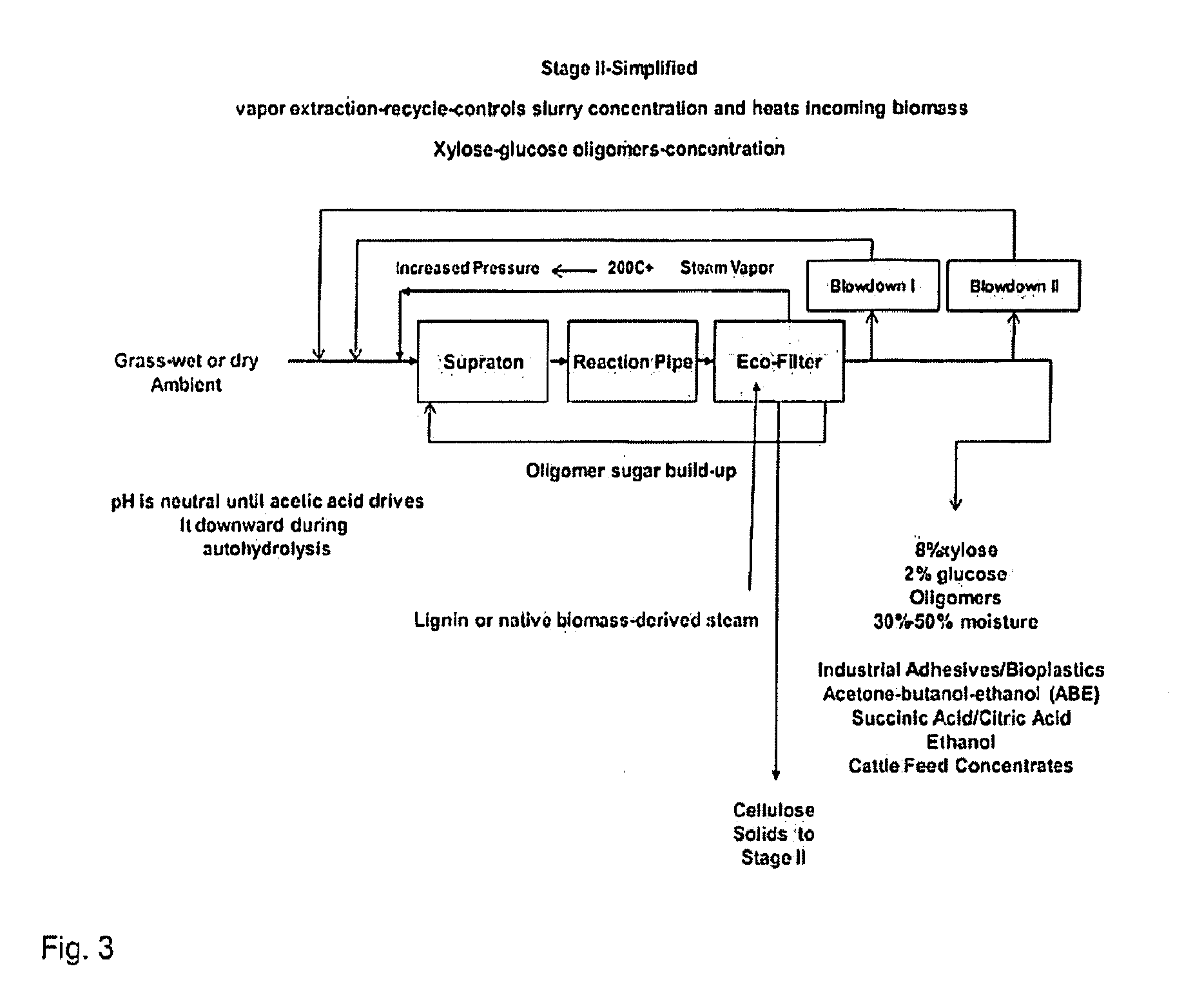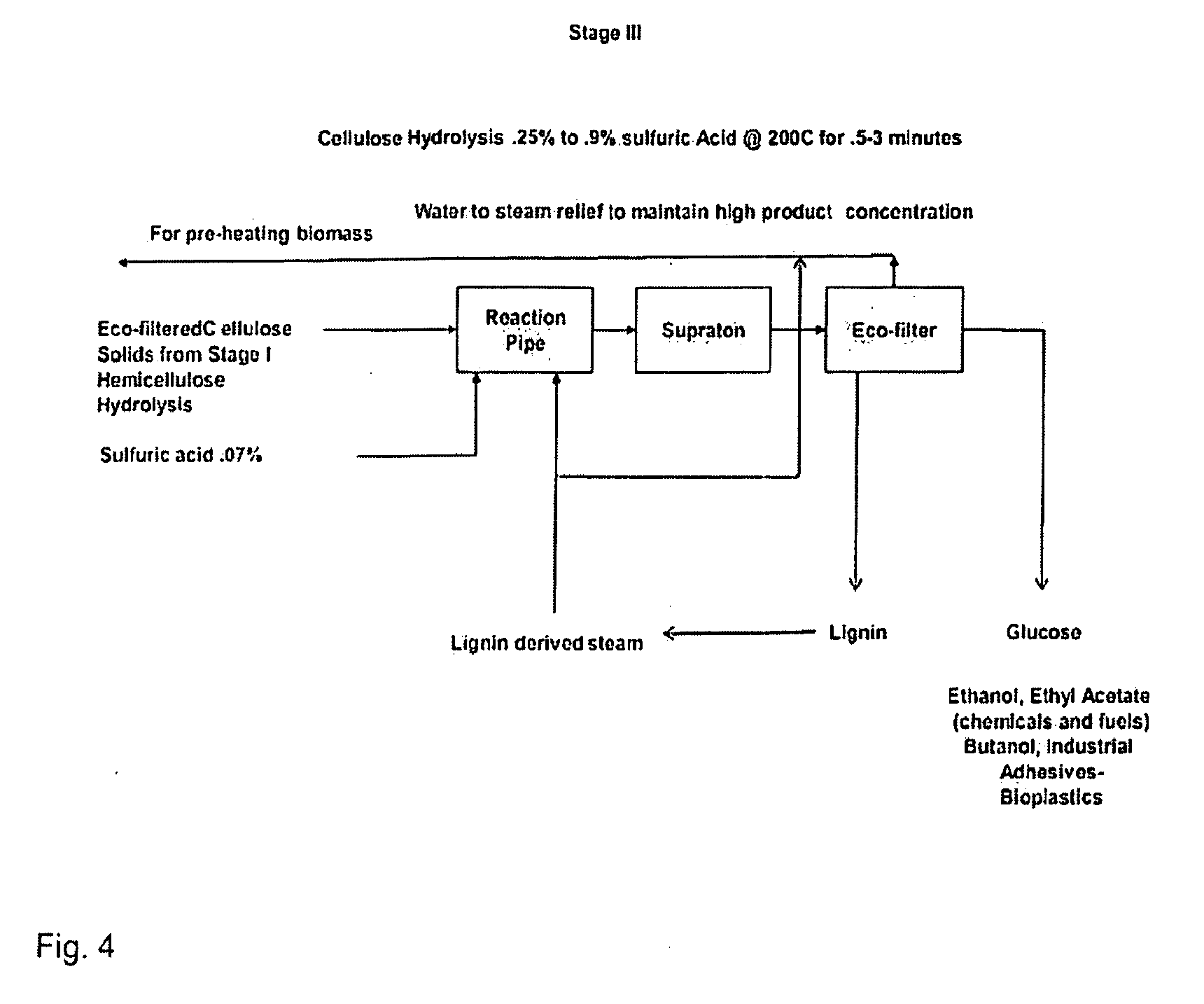Advanced biorefinery process
- Summary
- Abstract
- Description
- Claims
- Application Information
AI Technical Summary
Benefits of technology
Problems solved by technology
Method used
Image
Examples
Embodiment Construction
[0018]The present invention provides methods that utilize energy savings steps for treating and hydrolyzing biomass while creating very fine particles possessing extensive internal surface area. A wide range of conditions including high temperatures, acids or bases, and optionally using no added acids or base chemicals, with short hydrolysis times and high product concentrations are employed to convert high percentages of biomass to dissolved products in short timeframes.
[0019]As used herein, the term “biomass” includes any organic matter (whole, fractions thereof, and / or any components thereof) available on a renewable basis, such as dedicated energy crops and trees, agricultural food and feed crops, agricultural crop wastes and residues, wood wastes and residues, aquatic plants, animal wastes, municipal wastes, and other waste materials. Additionally raw materials include, but are not limited to, cellulose-containing materials, native or treated, such as corn-fiber, hay, sugar can...
PUM
| Property | Measurement | Unit |
|---|---|---|
| Temperature | aaaaa | aaaaa |
| Fraction | aaaaa | aaaaa |
| Fraction | aaaaa | aaaaa |
Abstract
Description
Claims
Application Information
 Login to View More
Login to View More - R&D
- Intellectual Property
- Life Sciences
- Materials
- Tech Scout
- Unparalleled Data Quality
- Higher Quality Content
- 60% Fewer Hallucinations
Browse by: Latest US Patents, China's latest patents, Technical Efficacy Thesaurus, Application Domain, Technology Topic, Popular Technical Reports.
© 2025 PatSnap. All rights reserved.Legal|Privacy policy|Modern Slavery Act Transparency Statement|Sitemap|About US| Contact US: help@patsnap.com



